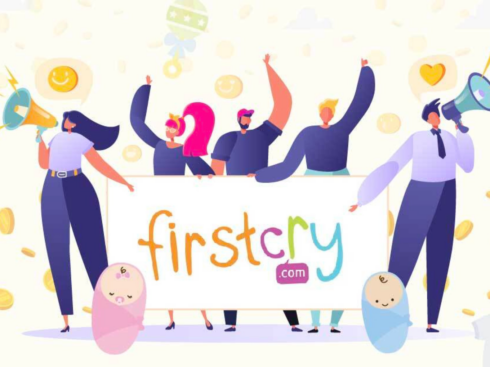
SUMMARY
Customer is looking for a ‘hole in the wall’ and not necessarily interested in your state-of-the-art drilling machine
Fewer companies have understood the job-to-be-done better than Ola Cabs
The traditional way of supply chain management has two distinct, clearly identifiable stages of planning and execution
As the world is waking up to the painful reality of human vulnerability in the face of ‘act of God’, we need more holistic, responsive thinking. Globally, supply chains are getting strained. To begin with, the supply chains of food, medicines, equipment and the protective gear, and then for everything else. Supply chains would define how quickly and with minimal damage would economies and societies revive themselves and get to the (new) normalcy.
Supply chains have come a long way, from the relic of the backend to right and centre in a customer-centric economy. The boundaries between B2B and B2C industries are blurring as rapidly as the chasm between products and services. Products are fast getting consumed as services, and services as experiences and the customer doesn’t shy away from paying a premium for that extra care, the extra intangible, which is, though hard to measure, remains as a huge wellspring of differentiation.
The traditional supply chains were designed with a product, or mostly a commodity, in mind, while the new reality insists on delivering an experience and not just a branded commodity.
The real questions are: Are our supply chains truly human-centric? Are they geared to handle large scale, unprecedented, complex crisis, such as Covid-19? Is our supply chain and logistics view out of sync with the new customer expectations? Should we not re-name our supply chains as value chains, or better still, experience chains? The answer might be (disturbingly) yes.
In this piece, I intend to build a case of how our understanding, designing, and management of supply chains would hugely benefit from adopting a more holistic, human-centric approach, and how the tenets of design thinking could elevate our performance. Here, I offer three insights drawn from the realm of design thinking that would help you become a better supply chain manager and help your company, economy and society bounce back from the nadir.
Focus On The Customer’s ‘Job To Be Done’
The legendary economist and professor at Harvard Business School, Theodore Levitt, once famously question companies asking them – what business are you in? He suggested that General Motors is not a car company but is a company providing people with their transport needs, and contended that by defining their offerings in the broader terms of customer needs, the companies can serve multiple markets and can remain resilient in the face of rapid change.
Harvard’s Clayton Christensen took this argument forward by proposing the ‘jobs to be done’ theory, where he offers that a customer essentially hires you to get a job done. The hiring paradigm versus that of selling goods or services is a very radical shift, for essentially everything gets distilled into engagements where experiences are created or destroyed. So, essentially the customer is looking for a ‘hole in the wall’ and not necessarily interested in your state-of-the-art drilling machine.
In this new light, where does your supply chain efforts still go? In delivering the right product, at the right time, and (hopefully) with acceptable profits. The hiring notion opens up the possibilities enormously because now it doesn’t have to be a product, let alone your product, and that you must assume the role of being an orchestrator of the service for which the customer has hired you.
Understanding the job to be done, versus products to be delivered is the first step towards developing customer-centricity, notwithstanding the sheer difficulty it presents because most supply chain professionals view customers as cold data, and this needs to change.
Fewer companies have understood the job-to-be-done better than Ola Cabs. By no means India’s first cab-hailing company, but arguably the largest and fastest-growing, Ola thrives on an acute understanding of what all the customer seeks from a taxi. It started with a simple cab aggregator, but soon Ola added multiple cab options, payment options, postpaid services, wallet, Ola Select, out station taxis, long duration rentals, Ola Play services, sharing, autorickshaws, luxury cars et al.
While Ola may have copied Uber, it seems that today Uber can’t copy Ola, especially with the way Ola is expanding its offerings, much in view of what all customer jobs to be done– travel, entertainment while travelling, travelling outstations, travelling cheap, travelling in groups and you name it.
Solve The Problem With The Customer, Not For The Customer
A customer’s job to be done can conveniently be viewed as a customer’s problem to be solved, except that an acute understanding of what exactly is the problem often remains mired with guesswork and data. Even if she wants a hole in the wall, the question remains about the purpose of the hole. Is it to hang a painting? To fix a towel rod or a cloth hanger? Or To mount an LCD TV? A clear understanding of the customer intent, and not just the ask, can go a long way in offering the best possible solution to the customer.
Imagine that the customer wants a hole in the wall to hang a painting or a family photo. Can there be an alternative to making a hole? Can she stick to the painting? Can she project the painting? Can she draw it? Certainly.
All such possibilities didn’t even exist when the task was narrowly defined as ‘hole in the wall’, and your drilling machine company couldn’t but think of offering a lightweight, pink coloured drilling machine, as their market research indicated that women consumers are increasingly in need of lightweight power tools! That is like short-circuiting your thinking.
Design thinking offers that you must ‘co-discover’ the problem with the customer before ‘co-creating’ the solution with her. The skills of problem discovery are equally, if not more, important as the skills of solutioning, and if an unarticulated, loosely understood problem is unearthed the rewards are enormous.
Your entire supply chain may be based on the obvious solution addressing a well-defined need, and this only levels the playing field. You need to get closer to the customer, allow her to articulate well beyond her palate of vocabulary, offer possible solutions and, in a very prototypical manner, emerge out with a compelling solution.
This, of course, calls for iteration, but more importantly mandates an entirely new way of looking at your customers, not as consumers of your offerings, but an offeror of problems worth solving.
Think of how Oyo rooms have discovered a latent need by working closely with both customers seeking rooms and hotels having an inventory and in the process crated a very reliable, scalable model of room rentals across 23,000+ hotels in 800+ cities in 18 countries around the world.
The founder, Ritesh Agarwal’s introduction at the OYO Official Blog reads, ‘travelling across India at the age of 17, Ritesh stayed in more than 100 bed and breakfasts, guest houses, and hotels to realize there was a massive dearth of affordable and good-quality hotels in the budget hotel category.’
Nothing beats first-hand insight, and only when you solve the problem with the customer that you understand the pain points and possible solutions.
Adopt an iterative thinking
The traditional way of supply chain management has two distinct, clearly identifiable stages of planning and execution, often managed by two separate departments. The so-called strategy team would take all possible conditions and variables into consideration and then offer a grand plan to the execution team which would then be chased to meet the ends.
This linear way of planning and execution doesn’t allow the organization to respond to changes in real-time and lead to massive opportunity costs. With industry boundaries blurring (imagine Sony launching an electric vehicle and Google getting to autonomous vehicles), you are better off designing an adaptive supply chain, which can respond to newer opportunities and fend of threats, without incurring massive costs.
As the management guru, Henry Mintzberg likes to say – ‘all strategy is emergent’, in the realm of supply chain one must be advised that all thinking is iterative. Nothing can be casted in stone, for your supply chain is the first place that would feel the change, and it can’t be the last where change is implemented. It must be responsible in an almost self-correcting manner.
An iterative thinking places a premium on failing faster for succeeding sooner. Instead of aiming for being ‘right first time’, the intent is to be ‘wrong first time’, wrong second time, wrong third time, and, maybe, right the fourth time. Except that most people don’t survive being wrong first time, and as a result, they often low-ball their efforts.
An iterative thinking comes along with an experimental, prototype-oriented mindset, where learning takes precedence over correctness and one is encouraged to fail cheaper.
Take for instance Paytm, the quintessential Indian success story in the digital era. From a humble use case of mobile phones and DTH currency recharge, the platform has grown to become India’s largest mobile wallet and commands a sizable share of all the UPI transactions. Every opportunity thrown at Paytm, the company mopped it up in style and emerged stronger.
Whether it was demonetization, the introduction of UPI transfers, or the more recent mandate of Fastag, Paytm kept its supply chain agile, always following the trend, mobilizing the resources, and a step ahead of the competition.
Design thinking is not about design as much as about thinking. Thinking in a systematic, human-centric way such that complex problems can be solved elegantly. There are several avenues of applying design thinking principles and practices to supply chain, starting with understanding the customer’s implicit desires, to building a solution together, and being adaptive all this while such that you don’t miss out on weak signals.
Remember, the competition is shifting from between products to between value chains, and it is more than evident that too narrow a focus on the product can blindsight you from looking at major inflexion points in your industry. Being closer to the customer is a sure way of serving both the current and future customer profitably, your product then remains incidental, or perhaps inconsequential.


























